What does the headphone resistance affect?
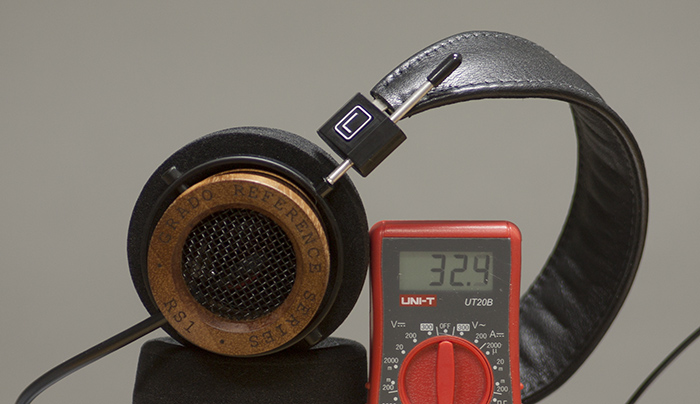
After the interview, the most questions were related to the headphone impedance characteristic. Consider what the characteristic affects and what it eats. For a better assimilation of the material, we will consistently produce materials, collect questions and comments and move on.
Before analyzing what and how the resistance of the headphones affects, let's see what kind of overseas bird it is. And we are preparing for the fact that there will be already two formulas from the standard school course of physics. Those. The material is complex and heavy.
Headphone impedance is often referred to as impedance or headphone impedance .
')
From the point of view of terms, where by resistance is meant only the active (resistive) part, by impedance (impedance) is meant the combination of active and reactive resistance. Recalling the school course of physics, we know that capacitance and inductance belong to reactive resistance.
The final impedance of the headphones depends on the frequency at which the resistance is measured. On boxes, often only the active resistance is given or, occasionally, the value obtained at a frequency of 1 kHz. Unfortunately, the accompanying parameters are rarely indicated and one can only guess what the impedance value of the headphones actually is.
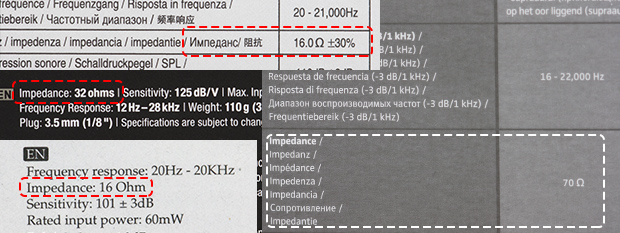
If we are talking about dynamic headphones, the values in the form of 16, 24, 32 Ohms, etc. they mean the resistance only of the coil inductance of the speaker and do not take into account the resistance of the wire, the soldering of the contacts and the plug. In reality, headphone impedance is usually 1-3 Ohms higher and slightly different between the right and left channel. The most conscientious manufacturers honestly indicate that the accuracy of this resistance is 20 or 30% and this is normal (only the marketer strongly objects to this, no errors on the box can be given - the “truth” kills sales).
Low impedance and high impedance headphones
Headphones can be divided into low-impedance and high-impedance. For intra-channel and full-size headphones, the separation boundary is different.
For full-size: nickel-ohm headphones have a resistance of less than 100 ohms, and high-impedance headphones are above 100 ohms.
For intra-channel: low resistance not higher than 32 Ohms, higher than 32 Ohms - high resistance.
What kind of impedance for different headphones?
In-ear headphones
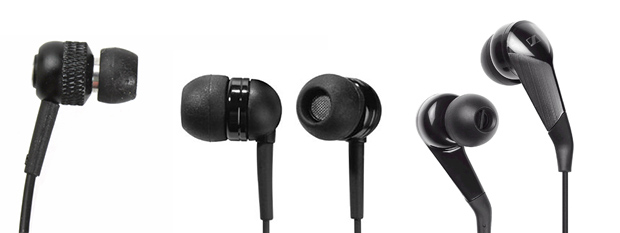

Most in -channel dynamic headphones have a flat impedance curve and the value of 16, 24 or 32 Ohms does not have deviations for frequencies from 20 to 20 kHz.
The graph shows the horizontal frequency from 20 Hz to 20 kHz. Vertical - resistance (on a logarithmic scale).
Full-size dynamic headphones
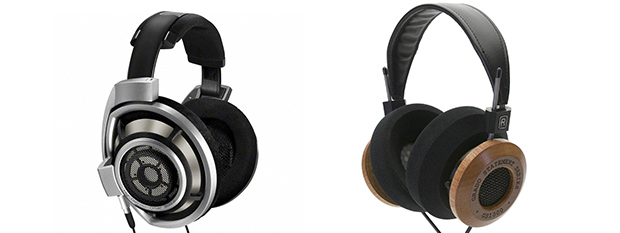

In full-size dynamic headphones, quite often an uneven impedance curve can be found, with local elevations in the low-frequency region and a slight increase in the high-frequency region.
Resistance can be equal to 32 Ohms without taking into account the reactive part (conditionally, this is 0 Hz, measured by any universal multimeter), but in practice it can be twice as high at certain frequencies.
Irregularities (lifts) can indicate both the resonances and the design features of the radiator in a given case of headphones. Thus, when measuring resistance, the frequency and amount of lift can vary greatly depending on whether the headphones are lying loose on the table or wearing a mannequin (in this case, the internal space of the headphones is damped).
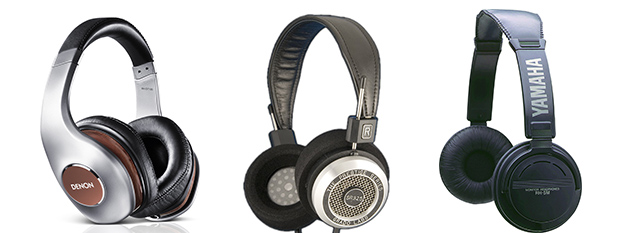
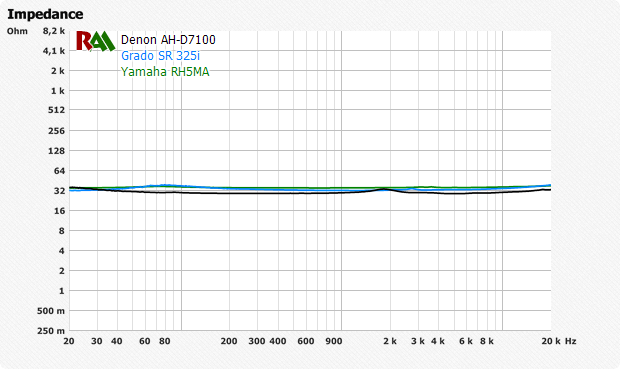
Some dynamic headphones have no noticeable resonances or deviations. This line is conditional perfect, but pick up headphones in this way is not recommended. In pursuit of improving one characteristic, one has to sacrifice another.
Among the top-class headphones you can find impedance curves with both minimal deviations and significant ones. If the headphones show a narrowband rise (in the graph above, this is the Grado GS1000 ), then the amplifier should be selected with a low output impedance for better control of the low frequencies (as done by the Grado RA1 branded amplifier).
Isodynamic (orthodynamic) headphones
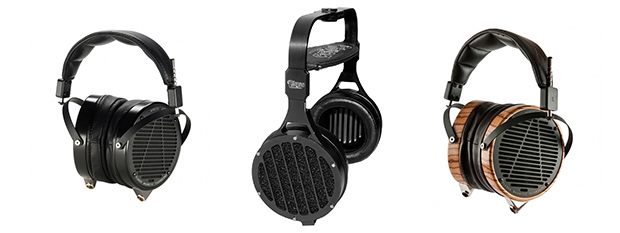
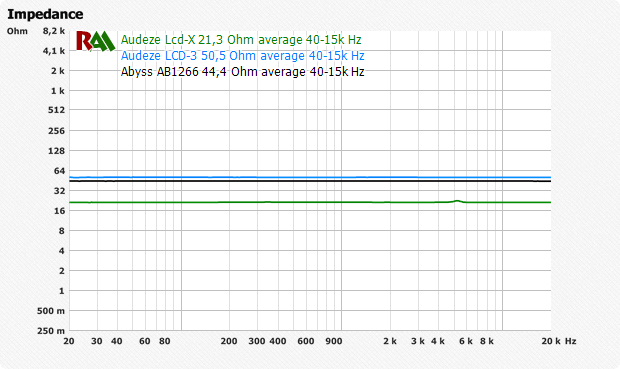
In addition to dynamic emitters, the isodynamic type of emitter is now widely used (and its similar type is orthodynamic). These headphones always have a straight impedance line. Isodynamic headphones now release: Abyss , Audez'e , HiFiMan, Oppo, Fostex. In Soviet times there were headphones TDS-5 / m, TDS-7, TDS-15, TDS-16 and TDS-25. Today, for models TDS-7 and TDS-15, modding is most often done.
Formally, this is an ideal load for the amplifier, but in the ultrahigh-frequency region (megahertz and gigahertz), in some models, the resistance decreases and tends to zero. Such cunning on the standard graphics can not be seen, and with some amplifiers this can lead to poor-quality operation.
Intra channel reinforcement headphones
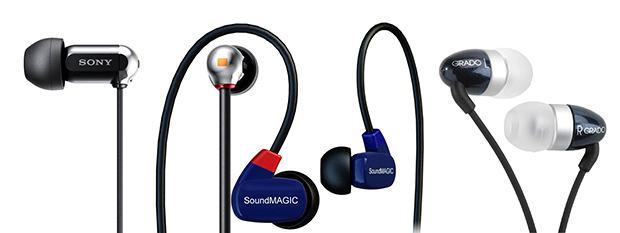
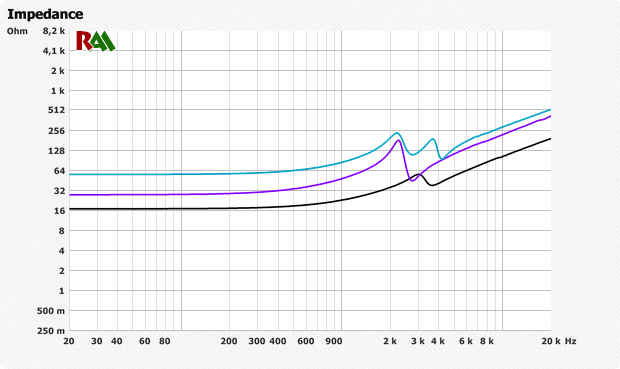
The impedance of the in -ear headphones with a reinforcement radiator is barely predictable. For single-driver models there is a common feature - there is always a local rise in the region of high mid frequencies (in the region of 1-3 kHz) and in the region of the highest frequencies. Due to the rise in the high-frequency region, most single-driver reinforcement models “sound clean” in the high-frequency region, since in this frequency range, the amplifier produces less distortion.
In the low-frequency region, the typical impedance is usually 8, 16, 24, or 32 ohms. Above 500 Hz rises begin.
If the indicated resistance is 100 Ohms per 1 kHz, this does not mean that the headphones are high-impedance, their resistance can be as little as 16 Ohms according to the readings of the multimeter (in the low frequency range).
Hybrid and Multi Driver Headphones
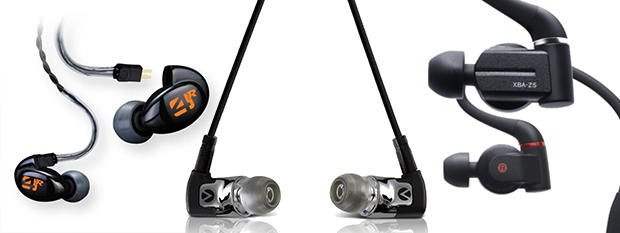
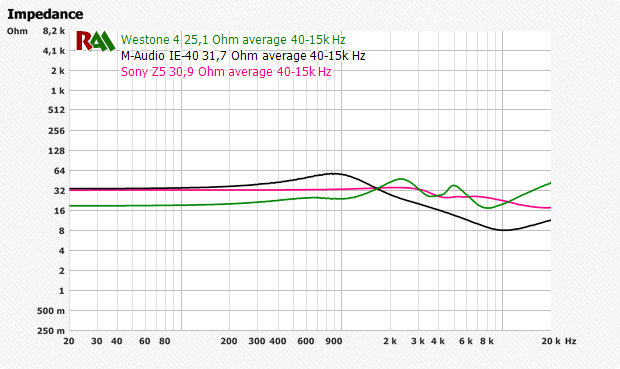
You cannot predict the impedance curve for multi-driver and hybrid in-channel headphones . The impedance curve can be any higher than 500 Hz. The drawdown of resistance can easily reach up to 4 ohms with a declared 100 ohm at 1 kHz.
General conclusions
- The resistance in reality will be as on the box , if the headphones: Intra channel dynamic or isodynamic
- The resistance in reality will be both on the box and have unknown lifts if the headphones: Dynamic overhead and full-size
- The resistance in reality will not be as on the box , if the headphones: reinforcement or hybrid
Why actually all this to know? Sometimes manufacturers of amplifiers and players indicate what kind of headphone impedance will be compatible and it is useful to navigate to this information.
If you need to know the real resistance from reinforcing or hybrid headphones, you can try to look for measurement results on the Internet. Impedance measurement methods usually give a single result and do not depend on software with a bench or a measuring complex.
What does headphone impedance affect?
Headphone sensitivity
Headphone sensitivity is usually reduced to power, which takes into account two characteristics at once: the voltage supplied to the headphones and the current. This is a convenient end point for theorists and extremely confusing for practical use by end users.
For the average consumer, it is logical to imagine that “sensitivity = loudness”. With columns it works, because always the value is indicated by the impedance of the column in the form of 4 or 8 ohms, and the amplifier power is similarly indicated. It is difficult to get confused.
But if for speakers there are only two typical impedances of 4 and 8 ohms and each amplifier provides power for two types of impedance, headphones have about 11 impedances: 8,16,24,32,64,128,256,320, 608, etc.
As a result, the consumer picks up headphones with different resistance and naively believes that he can compare something in sensitivity.
In order for the “sensitivity = loudness” relationship to be applied to headphones, the sensitivity must be expressed in terms of voltage, not power (as Sennheiser does). But most manufacturers do not indicate at all in which units the sensitivity is given.
This is why “everyone knows” that high-impedance headphones are quiet, and low-impedance headphones are loud. And they naively believe that a “powerful amplifier” is needed for high-impedance headphones, and a lousy smartphone will suffice for low-impedance headphones. And although in reality everything is completely different, due to the extremely unfortunate terms from the GOST and AES standards, separate “concepts” were formed that contradicted the laws of physics, but in the common language they describe the result quite accurately, like: “High-impedance headphones need a powerful amplifier”. Physically illiterate, but "everything is clear to everyone."
We will touch on this topic more deeply (carefully, we proceed to the formulas from the school, we begin to strain the brain!)
At the output of the amplifier, we do not directly control the power at all, but only the voltage level. Depending on the resistance of the headphones, the current level consumed by the headphones is obtained, which in turn determines the final power level.
It is very important to understand, because without changing the voltage level at the amplifier output, we cannot physically increase the current level separately and thereby increase the power level.
U = I * R , where
U - voltage at the amplifier output, V
I - current strength, And
R - headphone resistance, Ohm
W = I * U , where
W - power output of the amplifier, W
U - voltage at the amplifier output, V
I - current strength, And
If your brain does not boil over two simple formulas, you can move on.
An excellent example is the Beyerdynamic DT 770 series headphones with different resistance, 32, 80, 250 and 600 Ohms (some models are discontinued).
All headphones have a single sensitivity of 96 dB / mW, which means that if we feed exactly 1 mW to the headphones, the sound pressure level will be 96 dB SPL.
At 1 mW for different models we need to apply different ratios of voltage and current:
| Resistance, Ohm | 32 | 80 | 250 | 600 |
| Voltage at 1 mW, mV | 179 | 283 | 500 | 775 |
| Current at 1 mW, mA | 5.6 | 3.5 | 2 | 1,3 |
Those. a low ohm model of 32 ohms requires the lowest voltage, but the highest current level .
On the contrary, a high- resistance model needs the highest voltage, but a low current level .
We return to the fact that at the amplifier output we set the voltage level. In smartphones it is about 200-300 mV. Physically you can see the volume limit for high-impedance headphones, which makes high-impedance headphones automatically "quiet." And we actually lack not the “power” of the amplifier, but the trite voltage.
But if all manufacturers indicated sensitivity to voltage, then everything would be very clear:
| Resistance, Ohm | 32 | 80 | 250 | 600 |
| Sensitivity, dB / mW | 96 | 96 | 96 | 96 |
| Sensitivity, dB / V | 111 | 107 | 102 | 98 |
As can be seen from the table, the difference in volume between models with a sensitivity of 96 dB / mW for 32 and 600 Ohms is 13 dB.
According to the sensitivity to voltage, we see a direct connection with volume.
Main conclusions
- Sensitivity must be viewed not to power, but to voltage. This is the only way to compare headphones by “volume”
- The lower the resistance, the higher the sensitivity of the headphones. The higher the resistance, the lower the sensitivity.
And now, when we see that with different impedance from the amplifier, different levels of voltage and current are required, we can move on to other dependencies that are affected by the resistance of the headphones.
Hours player or smartphone
The higher the resistance of the headphones - the longer the player or smartphone will work without recharging, because high-impedance headphones consume less current (provided that the headphones are heard at "maximum" regardless of the final actual volume).

If you have a quiet smartphone, then there is no real choice in headphones with different resistances, only low-impedance headphones will have sufficient sensitivity.
However, if your smartphone or player has a “powerful” output (that is, it provides a voltage level higher than 200-300 mV), then you can choose between highly sensitive low-impedance headphones and less sensitive ones with higher impedance. In this case, with equal output loudness, replacing 16 ohms with 32 ohms will reduce the current consumption by one third. Against the background of energy consumption by the processor and other microcircuits, a smartphone or player will probably work not a third longer, but a quarter or a fifth. For example, with the Colorfly C4 Pro player, the operating time varies from 5 to 8 hours (5 hours with the M-Audio IE40 with a strong drawdown in the high-frequency region and 8 hours with high-impedance headphones).
For "powerful" players, such as iHiFi or Hidisz, it is worth picking up headphones with high resistance, and checking the sufficiency of the volume level in the store "without departing from the cash register." In Soundpal stores, you can listen and try everything before you buy.
Returning to the graphs with examples of resistance:
- Single-driver reinforcement headphones in reality have a higher average resistance and with them a smartphone or player can work longer without recharging.
- Multi-driver headphones may have a lower average resistance, and with them a smartphone or player can work less in time without recharging.
Sound quality
"Everyone knows" that "high-impedance headphones sound better". But in this case, not the headphones sound better, but the amplifier gives less current and as a result less distortion from the amplifier. But this rule is not a dogma, if the amplifier will operate with a voltage level higher than its normal mode, the source of distortion will be overload not by current, but by voltage.
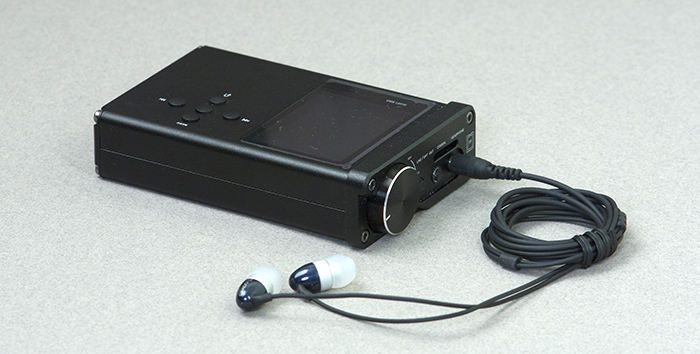
This is the big secret of the quality of single-driver reinforcing headphones (such as the Grado GR8 and GR10 , Etymotic models, older Klipsh), where, thanks to the rises in the upper mid and high frequencies, you get high-quality sound with those players and phones, where full horror with low-resistance dynamic headphones.
Headphone frequency response
If the amplifier does not have zero resistance, then the final frequency response will vary depending on the impedance curve of both the headphones and the amplifier. We will look at this in detail in one of the following releases, especially since it requires to consider what the output impedance of the amplifier affects.
How to measure the resistance of the headphones?
For detailed graphics, you need specialized software and a stand. But to find out the magnitude of the active resistance (in the region of the lowest frequencies), a budget multimeter is enough, costing from 200 rubles.
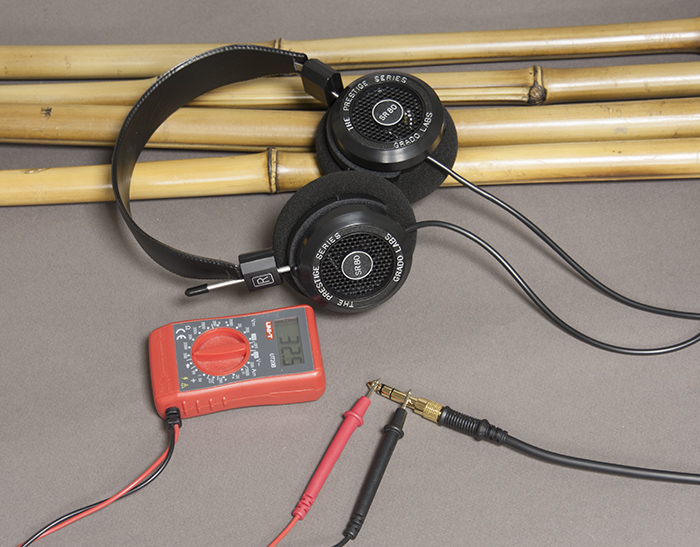
It is quite normal when buying headphones to check the resistance of the right and left channels, the discrepancy should not exceed 2-3 Ohms between the channels in most cases.
The author Kuznetsov Roman romanrex
Source: https://habr.com/ru/post/364839/
All Articles